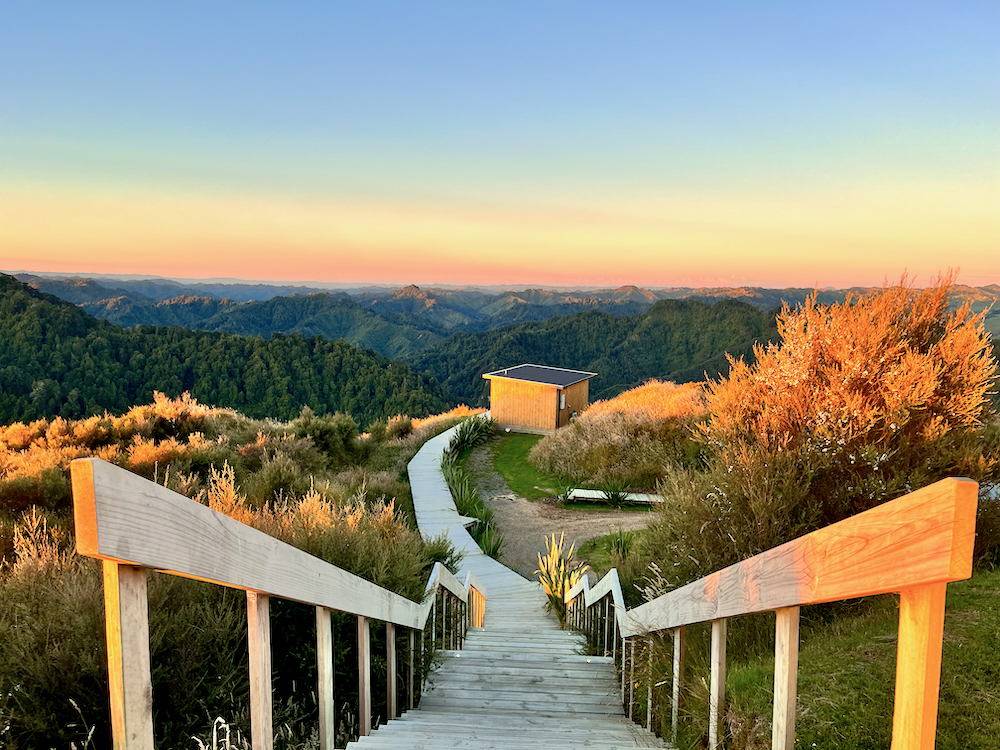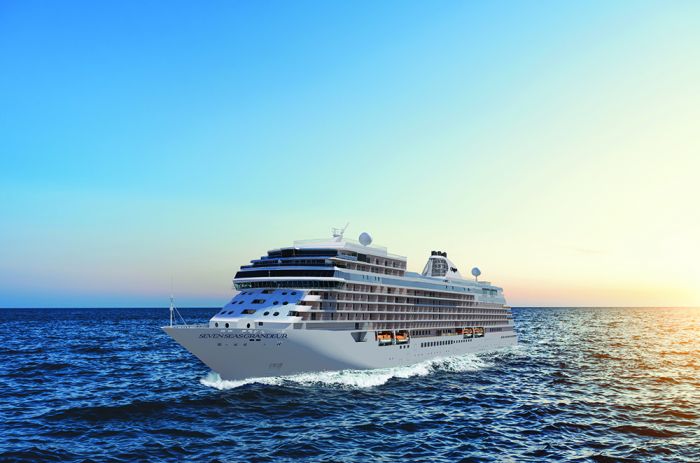
Photo Courtesy of Linex Protects/TVNweather
Just one month into the winter of 2012-2013, it seems pretty clear that severe weather is becoming a given, not a freak occurrence. For travelers who need to deal with tornado warnings, impending blizzards, hurricanes and other potentially catastrophic weather situations, Reed Timmer of Discovery Channel?s Storm Chasers is here to tell you how to plan wisely, avoid panic, and make it through the most extreme storms.
JustLuxe: If a normal person accidentally drives into a tornado watch zone, what should they do?
Reed Timmer: The first issue here is that a traveler should always be aware of a tornado watch when it is issued, and should not be caught by surprise. Other than watching the weather on television in advance, one way to be aware of impending severe weather is to always have a charged-up NOAA weather radio at home and when traveling. An alarm will sound given the issuance of any watches or warnings.
I?d also recommend following our Facebook or Twitter pages during storm season or before traveling as we post continuous updates on severe weather not only in North America, but worldwide. You can also check the Storm Prediction Center Convective Outlooks and watch/warning pages just before you leave and throughout your trip at SPC.NOAA.gov.
RT: If you?re still caught by surprise and you see a tornado approaching you on the road, the rule of thumb is to not try and outrun it. A good thing to remember though, is that if the tornado is not moving side to side and appears stationary, it?s either moving directly toward you, or directly away?so you should assume the former. If the tornado is distant and moving from side-to-side across your field of you, generally you?re likely out of its path and just hang tight. If the tornado is close and you don?t have time, you should abandon your vehicle and find a ditch or culvert and stay as low as possible until the tornado passes.
Research has shown that overpasses are actually more dangerous than a ditch or culvert for seeking shelter from tornadoes and even straight-line winds, since they can act to intensify the winds through the more narrow space between the supports on either side of the road. If it were me though in that situation, and PLEASE realize this is exactly what the NWS says NOT to do, I?d hit the gas and get out of there?at least until you?re in a position where the tornado is moving across your field of view and is at least a few miles away.
Also remember that just north of the tornado path there can often be hail to as large as softballs. We typically blow out around 5-10 windshields a year from baseball and larger hail as we punch through hail cores to intercept tornadoes. Getting struck by hail stones that large can be deadly, so be sure to use the ditch or culvert strategy as a last resort when there are no other options and if you have any question in your mind whatsoever that the tornado is about to hit you.

JL: What are the essential elements to pack in a travel-ready blizzard preparedness kit?
RT: We chase blizzards as well as tornadoes and hurricanes, and I’m completely honest that documenting the blizzard side of Superstorm Sandy in the Appalachian Mountains was more of a scary experience than any warm season storm. Because any mistake when driving could mean spending the night in a vehicle or at worst, a snow cave (one of the things I remember from being an Eagle Scout, and thankfully have not yet had to put to use). You can check out our Hurricane Sandy chase here from the mountains around Elkins, WV.
I did some research on blizzard safety kits before my first chase, and the following are the essentials that I’d pack in a plastic box, ideally with wheels since it will be heavy and you need to move it around. Most of these items can be found at any sporting goods or outdoorsman/camping store.

TVNWeather.com
1. Flashlights and batteries, long-lasting candles and lanterns that are safe to use inside your vehicle. Neither the gas nor the battery in your vehicle will last forever, and you never know if you’ll be trapped on the side of the road for days in the worst of the worst blizzards like the Superstorm in March 1993.
2. Non-perishable food with enough to last for days or even weeks, just to be really safe.
3. Blankets, hand warmers, gloves, socks, jackets and as much in the way of extra warm clothes you can get.
4. Prepaid disposable cell phone in case your phone battery dies and have no way to charge. A satellite phone is ideal and you’d only have to activate it given the possibility of blizzard conditions while traveling.
5. CB radio and HAM radio (even if you don’t have a HAM license, in a life or death situation you have to throw that law out the window).
6. Water purification tablets. You can melt all the snow around you and make sure to have these tablets so it’s safe to drink. Getting the runs in a blizzard with no drinking water would be a horrible situation to be in, as a huge understatement.

JL: Is there any real danger in traveling during hurricane season?
RT: Hurricane season stretches from July-October, which climatologically is one of the safest times to travel, at least outside of the Tropics where severe weather like tornado outbreaks and winter storms are not an issue. Hurricane landfalls are also a relatively rare and “few and far between” type occurrence, especially at any given location. The most common months for hurricane land falls along the coasts of North America, Caribbean/Atlantic island and coastal areas, and the Pacific Coast of Mexico are August-September, so front and back months (July, October) you have the least chance of having a hurricane or tropical cyclone interfering with travel.
If there is a hurricane heading to these areas, it will likely be all over the news anyway, so just be sure to take the forecasts very seriously. It’s always best to avoid the worst case scenario and assume the forecast tracks are accurate. In my opinion, hurricane season is the best time to travel if you want to avoid severe weather outside of the Tropics, but just keep an eye on any impending potential storms in the Tropics/Subtropics at the National Hurricane Center website.

JL: What are the dumbest things people do in hurricanes?
RT: I’ve seen some crazy things when chasing hurricanes, since usually the only people that stay behind other than those that lack the resources to get out of an evacuation zone are looters/criminals, police, and those that make the mistake of holding hurricane parties instead of heading the evacuation orders. I’m sure this was the result of one such hurricane party, but one time, I saw someone running along the sea wall in a bear costume during Hurricane Ike as the storm surge was coming in and nearly took the bear out to sea!
Assuming that the forecast is wrong and staying behind in a mandatory evacuation zone just because you think you’re tougher than everyone else is what most commonly leads to poor decision-making ahead of a hurricane landfall. Those people end up needing to be rescued, and tie up the resources of the Coast Guard, National Guard, and emergency personnel when they easily could have evacuated and gotten a hotel a few miles inland.

TVNWeather.com
JL: If you start seeing forecasts predicting extremely severe weather in an area which you plan to be traveling, and you DON'T want to be stuck in it, how many days prior is the forecast accurate enough to merit cancelling a trip?
RT: On the subject of forecast accuracy, the answer varies depending on the severe weather event, especially between those at Mid-latitudes (i.e., tornado outbreaks, blizzards, flooding rain storms) and the Tropics (i.e., hurricanes, disturbances that rain out a beach vacation for days). Tornado and severe thunderstorm outbreaks and blizzards are dependent on troughs that traverse the Polar Front Jet Stream—the river of fast-moving air high in the atmosphere where planes fly.
Very generally, troughs are bad and ridges are good for travel, unless you’re planning a ski vacation and are a powder hound. The computer models that base many of the forecasts you see on TV have about a 7-10 day predictability limit, with accuracy improving dramatically as you approach about 3-4 days out, and 1-2 days out usually those forecasts will verify. If the storm is a massive, widespread blizzard or severe thunderstorm/tornado outbreak, the accuracy of the forecasts is much better because they involve large-scale troughs that more closely follow the physical laws of the atmosphere we are always striving to better understand.

RT: In particular, tornado outbreaks consist of individual supercell thunderstorms that are often widely scattered across a geographical area, with a majority of the impacted region experiencing sunny skies and beautiful weather. The travel problems within a region experiencing a tornado outbreak only happen if you’re unlucky enough to be caught in the path of a tornado or the supercell thunderstorms that spawn them; as damage paths of tornadoes are usually widely separated and less than a half-mile wide in the worst case scenarios. Even if the forecast of a tornado outbreak is perfectly accurate a week in advance, a family could travel through the impacted region and still have no idea a tornado outbreak is underway—unless luck is not on their side.
On the other hand, severe weather events like blizzards and hurricanes much more uniformly impact a geographical region, with disrupting or even potentially deadly weather conditions impacted across an entire impacted travel zone. In short, if you knowingly or accidentally travel into a hurricane or blizzard, escape plans are no longer an option if conditions have already deteriorated.

RT: Even as a storm chaser, I experienced this with Hurricane Katrina when the 20-foot storm surge blocked all of our escape routes, and our only option was to stand on the balcony of a tall, sturdy structure and watch our Honda Accord storm chasing vehicle float away. I covered the agonizing experience on video if you want to check out probably the worst case scenario for a traveler or storm chaser, aside from loss of life of course.
So to answer the original question, first consider the characteristics and geographical scope of the severe weather being forecast. Blizzard and hurricane watches and warnings should never be taken lightly. Imagine if you assume a forecast is inaccurate, and decide to proceed with travel plans through or into an area where a blizzard or hurricane warning is in effect. Dangerous scenarios are then inevitable if that forecast is accurate, and you—and the friends and family you’re traveling with—will likely be trapped in dangerous conditions for days, and share one of the most horrifying and frightening experiences of your lives.
That’s the best case scenario, as loss of life is a reality depending on the strength of the storm system. Thus, regardless of your confidence in a National Weather Service blizzard or hurricane warning, or the local weathercaster relaying this information, it’s just not worth taking the chance. I’ve been there as a storm chaser, and trust me, you don’t want to be in that situation.

TVNWeather.com
JL: As one of the most fearless travelers on the planet today, what advice would you give nervous travelers to help them become more comfortable with weather, unknown situations and bumps in the road?
RT: Don’t fear the storm and let the nervousness dominate your thoughts. That just leads to irrational situations and anxiety is never enjoyable. Understand the storm. If you understand and learn about something it’s much less capable of causing fear. Proactivity and preparedness is VERY important. Have safety kits for traveling, and heed the watches and warnings. I promise the simple purchase of a NOAA weather radio can go a long way toward alleviating your fears.
I’d also recommend watching as many severe weather videos online as you can, to learn about storm structure and the potential impacts of all forms of severe weather. The perfect place to start is our new online TV series, Tornado Chasers, available for streaming and episode download at TVNweather.com.
We’ve already released 12 episodes and not only will you always be at the edge of your seat as we’re trying to intercept tornadoes directly with our armored extreme tornado research tank, aka the “Dominator,” but you’ll learn about storms, the science behind them, and respect their potential power.














